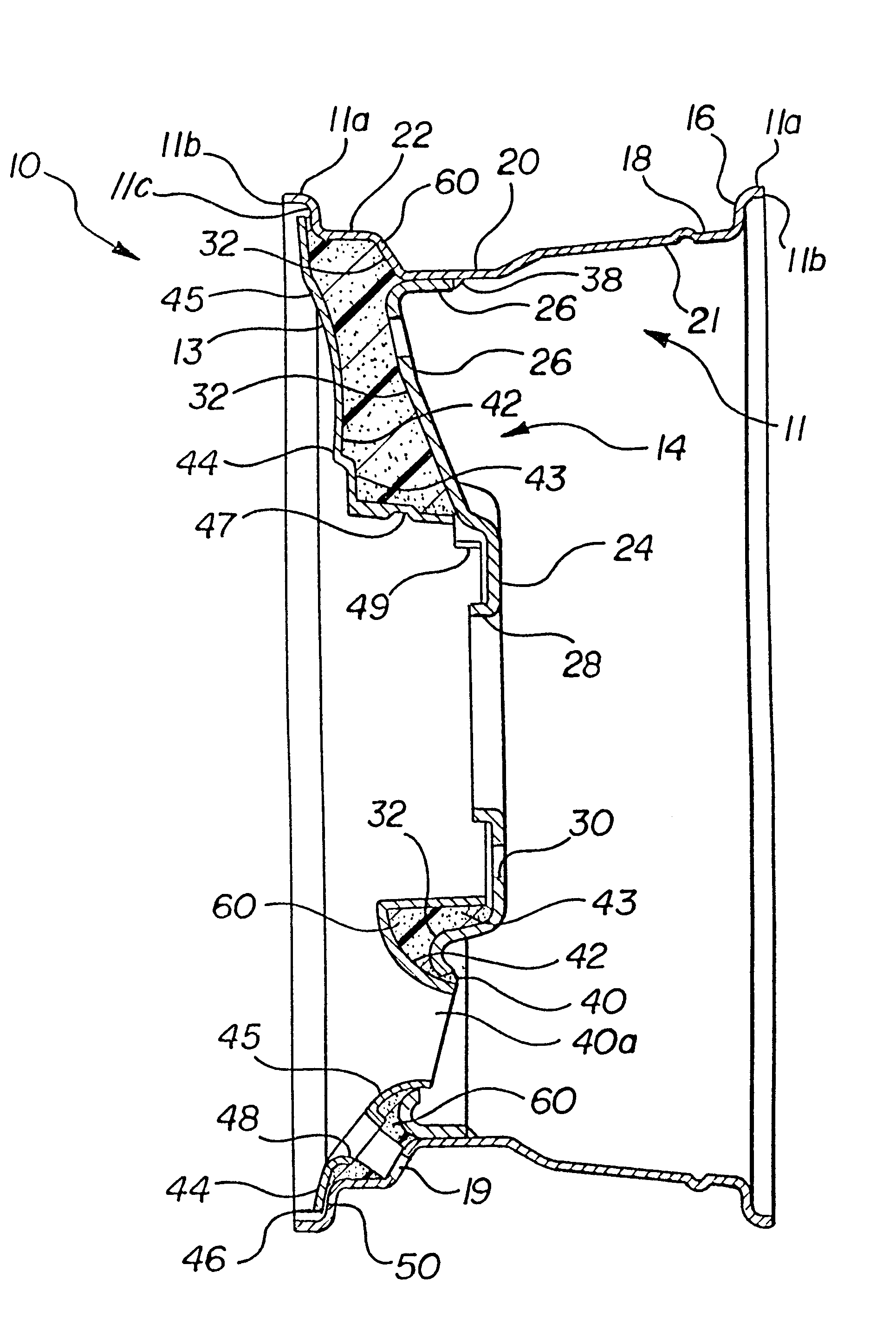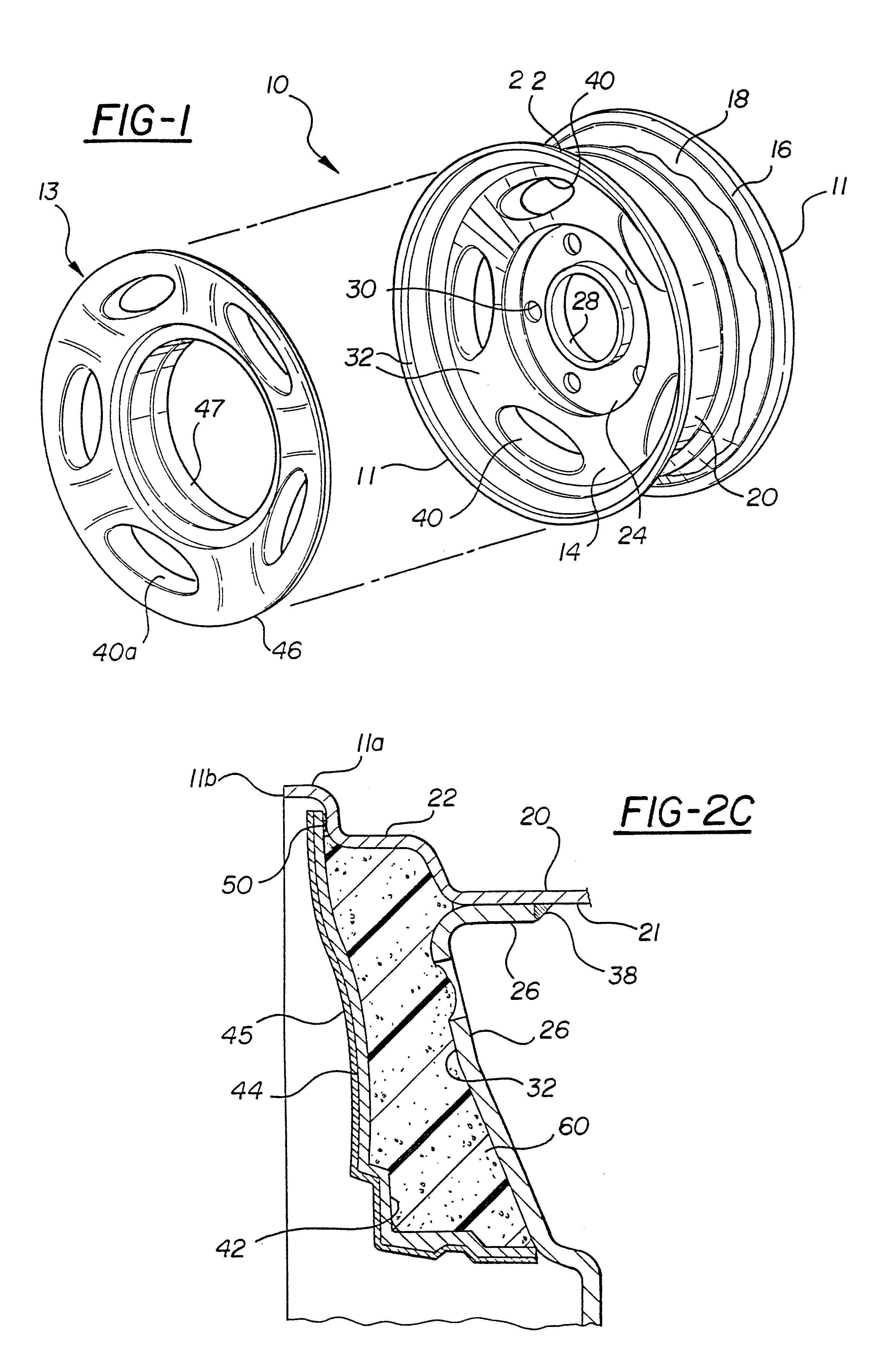Vehicle wheel construction process
a technology of vehicle wheels and construction processes, applied in the field of composite wheel assemblies, can solve the problems of difficult plate chromium plating, high cost of adhesive tapes, and general prohibitive mass production cost of such adhesive tapes
- Summary
- Abstract
- Description
- Claims
- Application Information
AI Technical Summary
Benefits of technology
Problems solved by technology
Method used
Image
Examples
Embodiment Construction
Generally the process of assembly, 100, of the present invention, shown in flow chart form in FIG. 3A and FIG. 3B, involves fixturing an overlay, 102, applying an adhesive, locating a wheel to the overlay, 110 and 120, thereby defining a cavity or voids 43 therebetween, preheating the overlay / wheel assembly 130, and filling the overlay / wheel assembly with a foam adhesive 140, 150. There are various optional steps and alternatives that will be discussed in detail throughout this assembly process.
Referring generally to FIGS. 2A through 3B, while the preferred process 100 teaches the use of an adhesive sealant 50 shown in FIG. 2C applied to the overlay 13 prior to locating the overlay 13 to the wheel 10 to serve the stated purposes, the process may be practiced without the use of the adhesive sealant 50 disclosed in the preferred embodiment or, alternatively, adhesive sealant may be used on the respective mating surfaces of the wheel 10 and overlay 13 around the turbine openings. It is...
PUM
| Property | Measurement | Unit |
|---|---|---|
| temperature | aaaaa | aaaaa |
| temperature | aaaaa | aaaaa |
| temperatures | aaaaa | aaaaa |
Abstract
Description
Claims
Application Information
 Login to View More
Login to View More - R&D
- Intellectual Property
- Life Sciences
- Materials
- Tech Scout
- Unparalleled Data Quality
- Higher Quality Content
- 60% Fewer Hallucinations
Browse by: Latest US Patents, China's latest patents, Technical Efficacy Thesaurus, Application Domain, Technology Topic, Popular Technical Reports.
© 2025 PatSnap. All rights reserved.Legal|Privacy policy|Modern Slavery Act Transparency Statement|Sitemap|About US| Contact US: help@patsnap.com



